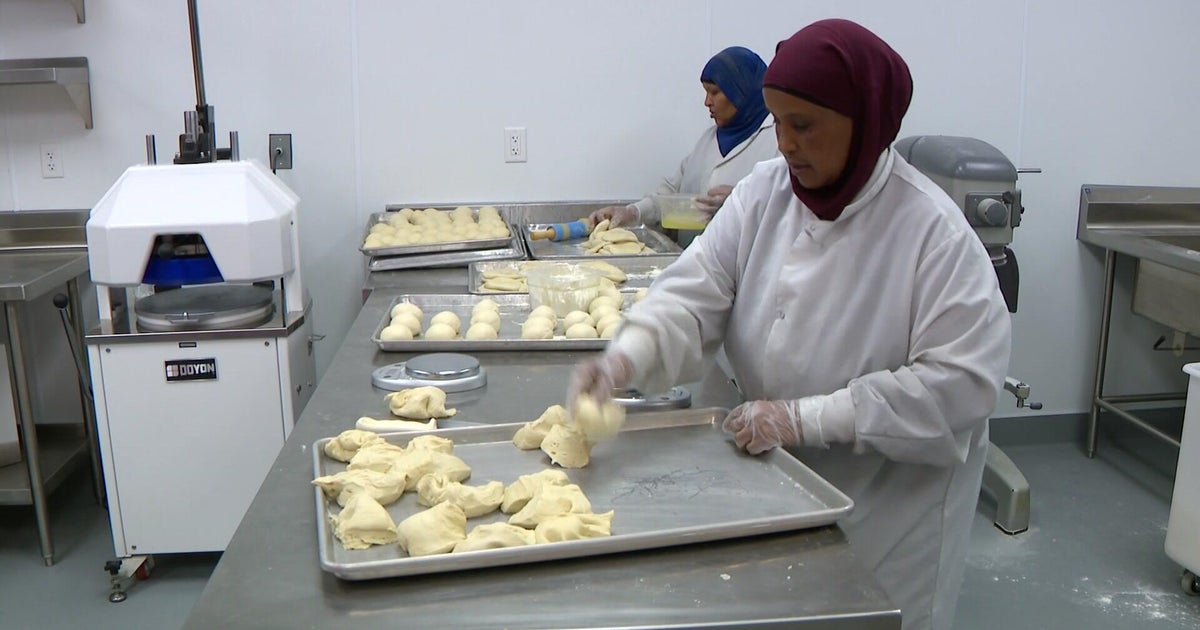Hoyo Sambusa expands business, mission to empower Somali women – CBS News

Executive Summary
Hoyo Sambusa, a food enterprise established a decade ago, has demonstrated a significant positive impact on several United Nations Sustainable Development Goals (SDGs). The company was founded with the primary objective of empowering women from the Somali refugee community in Minnesota by providing a pathway to financial independence. Through its business model, Hoyo Sambusa actively contributes to gender equality, poverty reduction, decent work, and the reduction of inequalities.
Company Profile and Mission
Origins and Leadership
Hoyo, which translates to “mother” in Somali, was co-founded by Mariam Mohamed to address the economic challenges faced by Somali women, many of whom were limited by welfare dependency. The company, now a $1 million enterprise, is led by CEO Ghita Worcester. The leadership’s commitment is evidenced by their decision to reinvest all profits into the company’s growth and mission, taking no personal salary.
Contribution to Sustainable Development Goals (SDGs)
SDG 5: Gender Equality
Hoyo Sambusa’s core mission is centered on the economic empowerment of women, a key target of SDG 5.
- The company provides stable employment and skills development specifically for women from a marginalized community.
- By fostering financial independence, it enhances their agency and decision-making power within their families and the broader community.
SDG 1 (No Poverty) and SDG 8 (Decent Work and Economic Growth)
The enterprise directly tackles poverty by creating sustainable employment opportunities.
- Hoyo Sambusa offers a direct alternative to welfare, providing employees with a stable income and contributing to the eradication of poverty (SDG 1).
- The company model promotes inclusive and sustainable economic growth by creating decent work for a vulnerable population segment (SDG 8).
SDG 10: Reduced Inequalities
The business is structured to break down systemic barriers and reduce inequalities faced by refugees and immigrants.
- It provides employment to individuals who face significant obstacles in the traditional job market.
- The model actively works to integrate the Somali community into the local economy, thereby reducing economic and social disparities.
Operational Success and Social Impact
Business Growth and Market Penetration
The company has achieved considerable growth and market presence, operating from a $1.6 million facility. Its success is marked by its participation in the Minnesota State Fair and the integration of its sambusas into school lunch programs across the state.
Fostering Social Cohesion
The presence of Hoyo Sambusa’s products in schools has had a notable social benefit. It has served as a cultural bridge, fostering positive interactions and mutual understanding between Somali and American children. This promotion of cultural exchange contributes to building a more inclusive and peaceful society.
Future Outlook and Vision
The company’s vision is intrinsically linked to its social mission and its commitment to the SDGs.
- The primary objective is to scale the business to expand employment opportunities.
- Future growth is viewed as the principal means to increase the company’s social impact by changing the lives of more people.
- The ultimate goal is to continue contributing to the financial independence and empowerment of the Somali community through regional and national expansion.
Sustainable Development Goals Addressed in the Article
-
SDG 8: Decent Work and Economic Growth
The article’s central theme is the creation of a business, Hoyo Sambusa, that provides jobs and fosters economic growth. The company’s mission to “hire more people” and make them “financially independent immigrants” directly contributes to creating decent work opportunities.
-
SDG 5: Gender Equality
The company was explicitly “founded to help empower women from Somalia.” By providing employment and a path to financial independence, Hoyo Sambusa directly addresses the economic empowerment of women, which is a key component of gender equality.
-
SDG 10: Reduced Inequalities
The initiative focuses on a specific marginalized group—Somali women refugees who might otherwise “fall into the cracks” and rely on welfare. By providing them with stable employment, the company works to reduce economic inequalities. Furthermore, the article mentions how the product brings “the Somali kids and the American kids together,” promoting social inclusion.
-
SDG 1: No Poverty
By offering employment, Hoyo Sambusa provides a sustainable income for its employees, helping them move away from dependence on welfare. This act of “making financially independent immigrants” is a direct contribution to poverty reduction.
Specific SDG Targets Identified
-
SDG 8: Decent Work and Economic Growth
- Target 8.5: By 2030, achieve full and productive employment and decent work for all women and men… and equal pay for work of equal value.
The article highlights Hoyo’s goal to “hire more people” and its success in “making financially independent immigrants.” This directly aligns with the target of achieving productive employment for a specific demographic (Somali women).
- Target 8.5: By 2030, achieve full and productive employment and decent work for all women and men… and equal pay for work of equal value.
-
SDG 5: Gender Equality
- Target 5.5: Ensure women’s full and effective participation and equal opportunities for leadership at all levels of decision-making in political, economic and public life.
The company’s entire mission is to “empower women from Somalia” by providing them with economic opportunities. This fosters their full participation in economic life, moving them from welfare dependency to financial independence.
- Target 5.5: Ensure women’s full and effective participation and equal opportunities for leadership at all levels of decision-making in political, economic and public life.
-
SDG 10: Reduced Inequalities
- Target 10.2: By 2030, empower and promote the social, economic and political inclusion of all, irrespective of… origin, religion or other status.
Hoyo Sambusa’s focus on hiring Somali refugee women is a clear example of promoting the economic inclusion of a group defined by origin and status. The story of the sambusas in school lunchrooms fostering connections between children is an example of promoting social inclusion.
- Target 10.2: By 2030, empower and promote the social, economic and political inclusion of all, irrespective of… origin, religion or other status.
-
SDG 1: No Poverty
- Target 1.2: By 2030, reduce at least by half the proportion of men, women and children of all ages living in poverty in all its dimensions according to national definitions.
The article states that without such opportunities, many Somali women “will be on welfare.” By providing jobs, Hoyo directly helps its employees secure a stable income, thereby reducing their risk of living in poverty.
- Target 1.2: By 2030, reduce at least by half the proportion of men, women and children of all ages living in poverty in all its dimensions according to national definitions.
Implied Indicators for Measuring Progress
-
Indicators for SDG 8 (Target 8.5)
- Number of people employed: The co-owner’s dream is “hiring more people,” which is a direct quantitative indicator of progress towards full employment.
- Company growth and revenue: The article mentions Hoyo is a “$1 million company” with a “$1.6 million facility,” which indicates its economic viability and capacity to create more jobs.
-
Indicators for SDG 5 (Target 5.5)
- Number of women achieving financial independence: The goal of “making financially independent immigrants” implies that a key metric is the number of female employees who are self-sufficient.
-
Indicators for SDG 10 (Target 10.2)
- Reduction in welfare dependency: The article contrasts employment at Hoyo with the alternative of being “on welfare.” A key indicator would be the number or proportion of employees who are no longer reliant on social welfare programs.
- Qualitative measures of social inclusion: The anecdote about Somali and American children connecting over sambusas in school lunchrooms serves as a qualitative indicator of improved social integration.
-
Indicators for SDG 1 (Target 1.2)
- Number of individuals lifted from welfare dependency: This is a direct measure of poverty reduction, as moving from welfare to stable employment increases household income and financial security.
Summary of SDGs, Targets, and Indicators
| SDGs | Targets | Indicators (Implied from the article) |
|---|---|---|
| SDG 1: No Poverty | 1.2: Reduce at least by half the proportion of people living in poverty. |
|
| SDG 5: Gender Equality | 5.5: Ensure women’s full participation and equal opportunities in economic life. |
|
| SDG 8: Decent Work and Economic Growth | 8.5: Achieve full and productive employment and decent work for all. |
|
| SDG 10: Reduced Inequalities | 10.2: Empower and promote the social and economic inclusion of all. |
|
Source: cbsnews.com
What is Your Reaction?
 Like
0
Like
0
 Dislike
0
Dislike
0
 Love
0
Love
0
 Funny
0
Funny
0
 Angry
0
Angry
0
 Sad
0
Sad
0
 Wow
0
Wow
0


















































.jpg.webp?itok=0ZsAnae9#)



/environment-climate-change-and-health-(ech)/water-sanitation-hygiene-and-health-(wsh)/landfill-tuvalu-36092.tmb-1200v.jpg?sfvrsn=5c21fe40_1#)




















